What is Granite [Composition, Properties, Types, Uses]
What is Granite
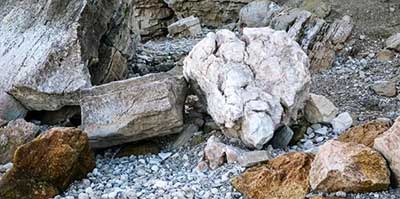
Granite is a type of tectonic rock that is formed when volcanic lava erupts in a molten state under higher pressure and lifts to the surface of the earth’s crust. The magma does not erupt out of the ground but gradually cools and solidifies underground. The acidic igneous rocks that form deep formations are magmatic (igneous).
Granite has a hard texture, acid and alkali resistance, and good weather resistance. It can be used outdoors for a long time and is essential in the landscape.
Composition of Granite
Granite consists mainly of quartz, feldspar and mica. The feldspar content is 40% – 60% and the quartz content is 20% – 40%. The main components of granite are specified below:
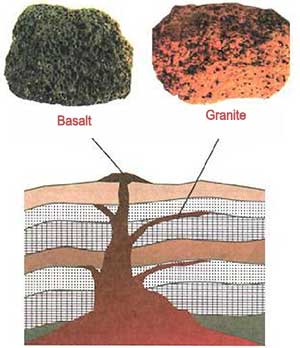
- Quartz: Quartz is one of the main components of granite. It is a colorless or slightly colored mineral with high hardness and good abrasion resistance. Quartz is resistant to heat and corrosion, so it is the most stable component in granite.
- Feldspar: Feldspar is another important component in granite. Feldspar can be divided into sodium feldspar and potassium feldspar. Sodium feldspar is rich in sodium, white or gray; potassium feldspar is rich in potassium, dark red or bright pink. Feldspar in granite content is very high, their hardness is relatively low.
- Mafic Rock: mafic rock is a minor component of granite and is usually gray or black in color. It consists of black mica and black titanium ore, with a metallic luster and high hardness.
- Auxiliary Minerals: There are also some auxiliary minerals in granite, such as black mica, hornblende and black titanium ore. Among them, black mica is a silicate mineral containing silicon, usually black or dark brown. Hornblende is an iron-bearing silicate mineral, often green in color. Black titanium ore is a titanium-containing oxide mineral that is black in color.
Granite is a rock with a complete crystal structure. Good quality granite has fine uniform grains, compact structure, high quartz content and bright feldspars. Granite is hard, acid and alkali resistant and weather resistant. It can be used outdoors for long periods of time and is essential in the landscape.
Properties of Granite
Granite is the hardest building material and has good abrasion resistance due to its extra hardness. Granite is stronger than sand, limestone and marble and is therefore more difficult to quarry. Granite is a unique material and its physical properties give it the following characteristics:
- (1) High rate of becoming a barren material, good abrasion resistance: excellent processing performance, can be spliced with good characteristics;
- (2) Bright color, solemn and elegant: good decorative, suitable for public places and outdoor decoration;
- (3) Good performance: non-conductive, non-magnetic, stable magnetic field position, high modulus of elasticity, higher than cast iron, good rigidity, internal damping coefficient, 15 times greater than steel, and can resist impact and shock;
- (4) Stable chemical properties: not easy to weather, its chemical properties and silica content is directly proportional to the service life of up to about 200 years;
- (5) High temperature resistance. Granite is mainly composed of quartz and feldspar, both of which are heat-resistant and suitable for some high-temperature environments;
- (6) Easy to process. In the cutting and polishing process, granite can maintain good stability, making the processing process smoother.
Types of Granite
Granite is rich and diverse and has been widely used in civil engineering since ancient times. Granite has a uniform texture and according to its color, it can be classified into the following types:
Red Types
The red granite is mainly syenite granite, followed by gneiss granite.
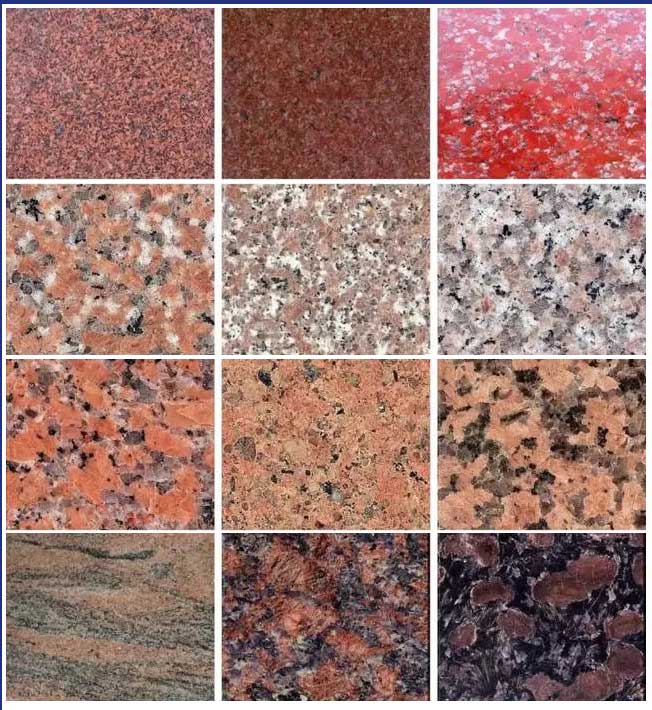
Yellow Types
The yellow granite mainly includes yellow rust stone, karamalijin, etc.
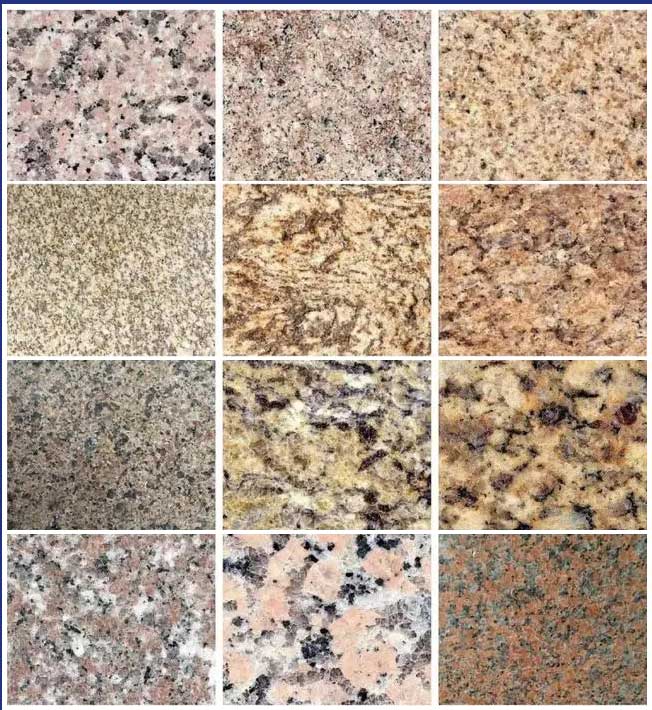
White Types
White granite mainly includes syenite type granite and diorite type granite.
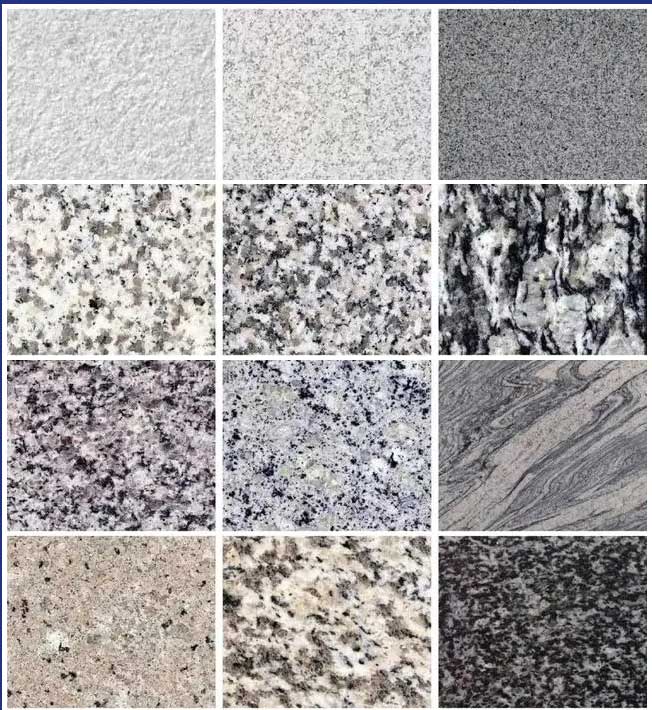
Black Type
Black granite mainly includes olivine granite, gabbro granite, and basalt granite.
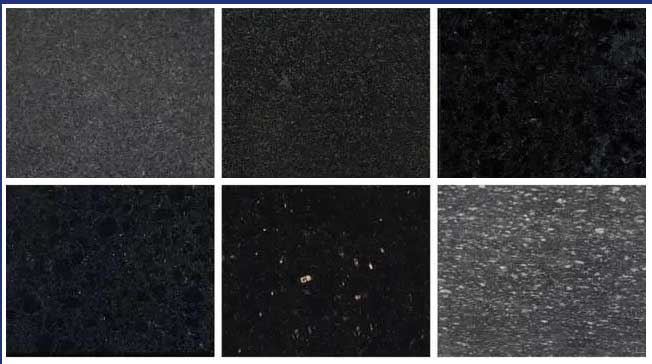
Green Types
Green granite mainly includes olivine granite, diorite granite, and andesite granite
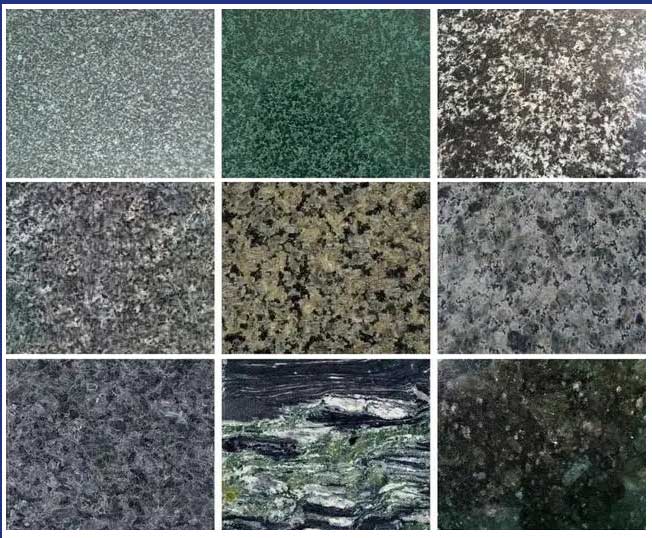
There are various types of granite in other colors, including blue, purple, and floral colors.
Uses of Granite
Granite has high quartz content, very little iron, tight crystalline bonding, excellent texture, acid resistance, corrosion resistance, wear resistance, is a high-quality corrosion-resistant materials. It can be used in construction, sculpture, decoration, chemical industry, metallurgy, brewing, printing and dyeing, national defense facilities and so on.

- Architecture: Granite is a strong, hard, penetration-resistant and abrasion-resistant material, so it is widely used in the construction field. It can be used to build the exterior wall surfaces of houses, floors, thresholds, window sills, columns and various decorative veneers. In addition, granite can be used to make pools, swimming pools, fireplaces, sculptures, columns and tombstones.
- Sculpture: Granite can be carved into various shapes and sizes, so it is also common in sculpture and monument making.
- Roads and Bridges: The strength and durability of granite make it an ideal material for highway and bridge construction, as it can be used to build bridge piers, roadbeds, road surfaces, and more.
- Beauty and Decoration: Granite can be used to decorate indoor and outdoor spaces, such as granite tiles, granite sculptures, and granite textured decorative walls.
- Environmental Engineering: Granite can be used in the field of environmental engineering, such as embankments, dams, etc.
- ShipbuildingIndustry: Granite can be used to manufacture ship decks, portholes, etc.
Overall, granite is a highly versatile material with extensive applications in fields such as architecture, beauty, and environmental engineering.
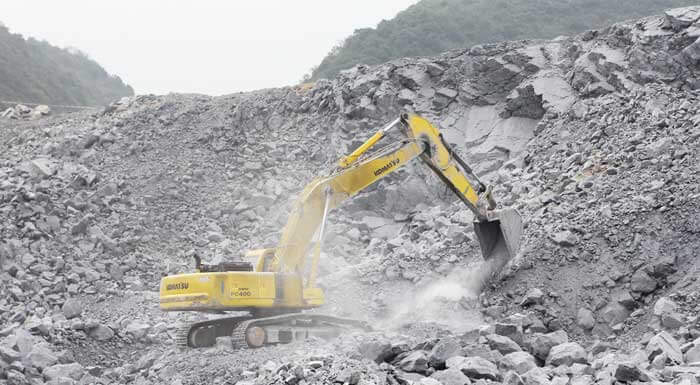 limestone | Composition | Properties | Source | 6 Types | 10+ Uses
limestone | Composition | Properties | Source | 6 Types | 10+ Uses Basalt Formation, Properties & Uses
Basalt Formation, Properties & Uses 20 Common Types of Cement [Properties & Uses]
20 Common Types of Cement [Properties & Uses] What is Tungsten [Applications, Properties, Types, Distribution]
What is Tungsten [Applications, Properties, Types, Distribution]



